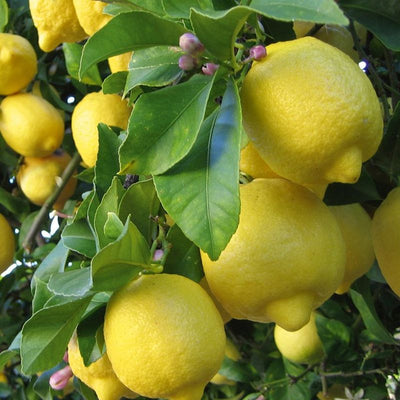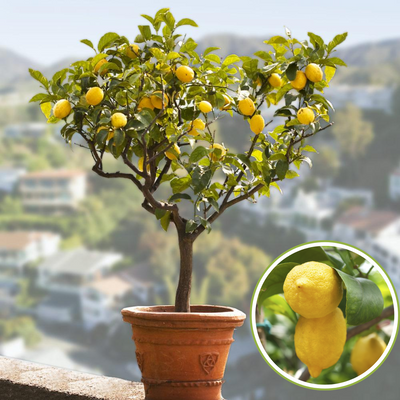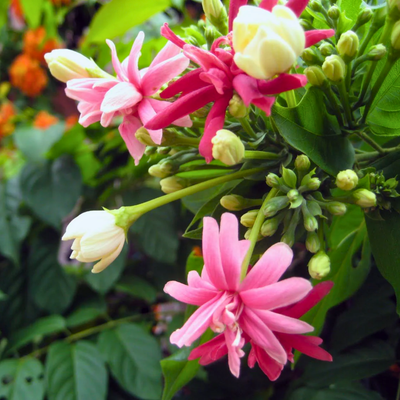

Bonsai Juniper Prostata Cascade Style With Ceramic Pot
Guaranteed Safe Checkout
Green Paradise Offers Healthy Bonsai
Juniper Prostata Cascade Style Plant
About Bonsai Juniper Prostata Cascade Style Plant
The Bonsai Juniper Prostrata, also known as the Cascade style Juniper, is a popular bonsai tree variety known for its distinctive cascading branches and rugged, gnarled appearance. It belongs to the Juniperus genus and is a low-growing evergreen shrub native to regions such as Japan, China, and Korea.
Here are some key features and characteristics of the Bonsai Juniper Prostrata Cascade style:
Size and Shape:
-
The Bonsai Juniper Prostrata Cascade style is typically smaller in size, making it suitable for bonsai cultivation.
-
It has a compact, spreading growth habit with branches that drape downward in a cascading manner, creating a graceful and dramatic effect.
Foliage:
-
The foliage of the Bonsai Juniper Prostrata Cascade style consists of small, needle-like leaves that are typically dark green or bluish-green in color.
-
These leaves are arranged in dense clusters along the branches, giving the tree a lush and textured appearance.
Bark:
-
The bark of the Bonsai Juniper Prostrata Cascade style is rough and textured, often displaying a reddish-brown coloration.
-
Over time, as the tree ages, the bark develops interesting patterns and fissures, adding to its aesthetic appeal.
Trunk and Branches:
-
The trunk of the Bonsai Juniper Prostrata Cascade style is usually thick, twisted, and contorted, showcasing a sense of age and character.
-
The branches grow in a horizontal and downward direction, creating the signature cascading effect that gives the tree its name.
Care and Maintenance:
-
Like other bonsai trees, the Bonsai Juniper Prostrata Cascade style requires specific care and maintenance to thrive.
-
It prefers a well-draining soil mixture and should be placed in a location that receives ample sunlight.
-
Regular watering, pruning, and wiring are necessary to shape the tree and maintain its desired form.
Symbolism:
-
Bonsai trees, including the Bonsai Juniper Prostrata Cascade style, hold special symbolism in Japanese culture.
-
They are seen as representations of harmony, balance, and the beauty of nature in miniature form.
-
Bonsai cultivation is considered an art form that requires patience, discipline, and a deep connection with the natural world.
Overall, the Bonsai Juniper Prostrata Cascade style is a visually striking bonsai tree variety that captivates with its cascading branches, rugged appearance, and timeless beauty. It is a favorite choice among bonsai enthusiasts and collectors who appreciate the art of miniature tree cultivation.
How To Grow Bonsai Juniper Prostata Cascade Style Plant
Growing a bonsai Juniper Prostrata Cascade-style plant can be a rewarding and enjoyable experience. The cascade style is characterized by the tree's trunk and branches cascading downwards, imitating the natural growth pattern of trees on rocky cliffs or mountains.
Here are some steps to help you grow a bonsai Juniper Prostrata in the cascade style:
Obtain a suitable plant:
-
Look for a healthy and well-developed Juniper Prostrata tree at a local nursery or bonsai specialty store.
-
Choose a plant with a thick trunk and branches that have a flexible and pliable nature, as this will make it easier to shape.
Select an appropriate container:
-
Bonsai containers should be shallow and have adequate drainage holes.
-
Choose a pot that complements the size of your tree and provides enough space for the roots to grow.
Prune and shape:
-
Begin by removing any dead, weak, or unwanted branches.
-
Use bonsai pruning shears or scissors to carefully trim the foliage and branches to achieve the desired shape.
-
Keep in mind the cascade style, where the branches should extend downwards and the foliage should be fuller towards the bottom.
Wiring:
-
Wiring is an essential technique in bonsai cultivation that helps shape the branches.
-
Use aluminum or copper wire to gently wrap around the branches, giving them the desired direction and form.
-
Take care not to damage the bark or branches while wiring.
-
Ensure that the wire is not too tight, as it may restrict the tree's growth.
Positioning:
-
Place the bonsai in a location where it will receive sufficient sunlight.
-
Juniper Prostrata prefers full sun or partial shade.
-
However, avoid extreme temperatures and ensure adequate protection during harsh weather conditions.
Watering and fertilizing:
-
Bonsai plants require regular watering to maintain proper moisture levels.
-
Water the Juniper Prostrata when the soil starts to dry out, but avoid overwatering, as it can lead to root rot.
-
Fertilize your bonsai with a balanced, slow-release fertilizer during the growing season to provide essential nutrients.
Repotting:
-
Every two to three years, repot the Juniper Prostrata to refresh the soil and promote healthy root growth.
-
Prune some of the roots to maintain a compact root system, allowing the tree to thrive in its confined space.
Styling and maintenance:
-
Regularly monitor the growth of your bonsai Juniper Prostrata and make necessary adjustments to maintain the desired shape.
-
Continually prune and wire the branches to refine the cascade style and encourage compact growth.
Remember that growing a bonsai tree is a patient and ongoing process. It takes time for the tree to develop the desired characteristics, so be persistent and enjoy the journey. Additionally, researching specific care techniques for Juniper Prostrata and seeking guidance from experienced bonsai enthusiasts or professionals can further enhance your bonsai-growing skills.
















